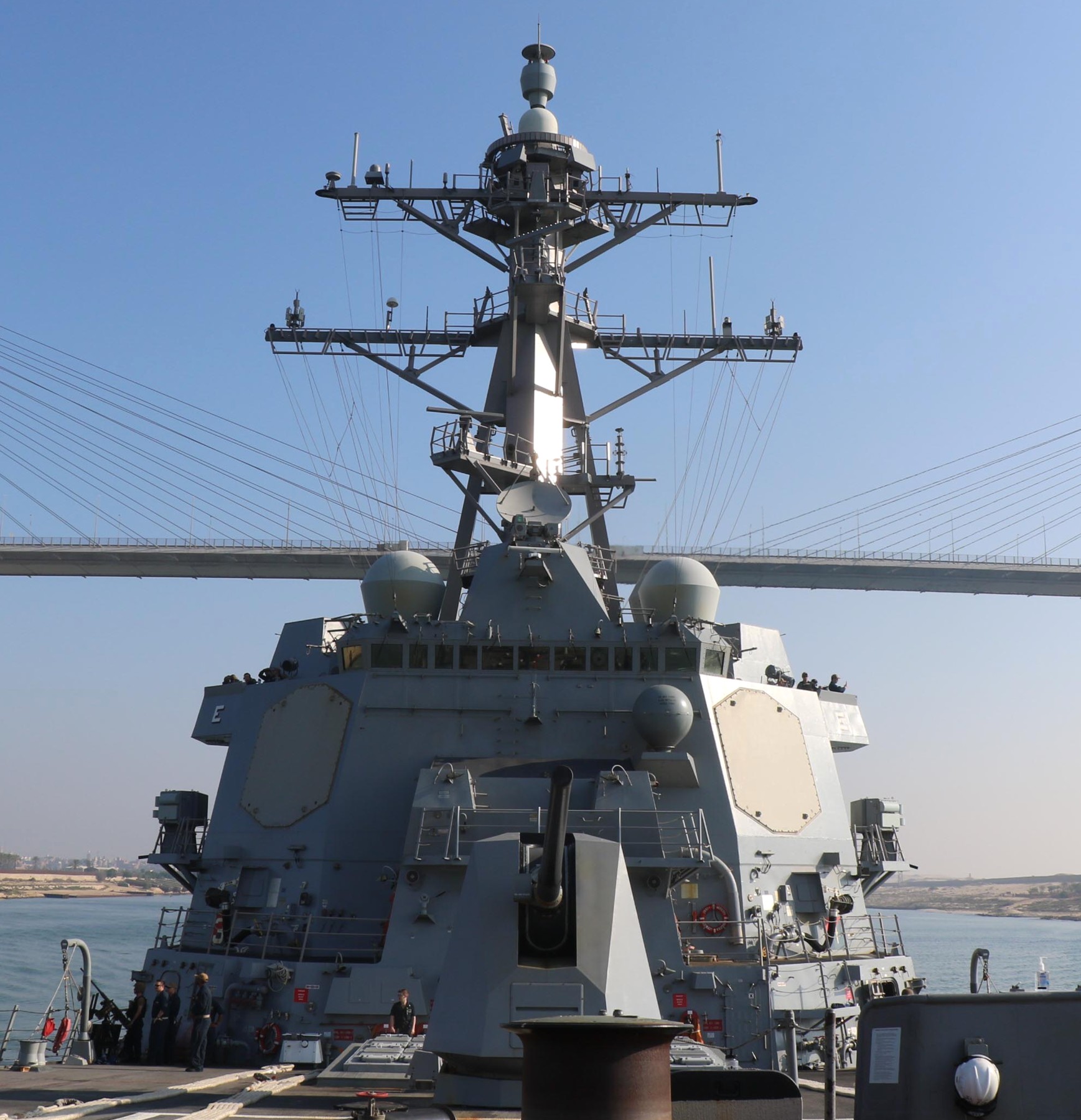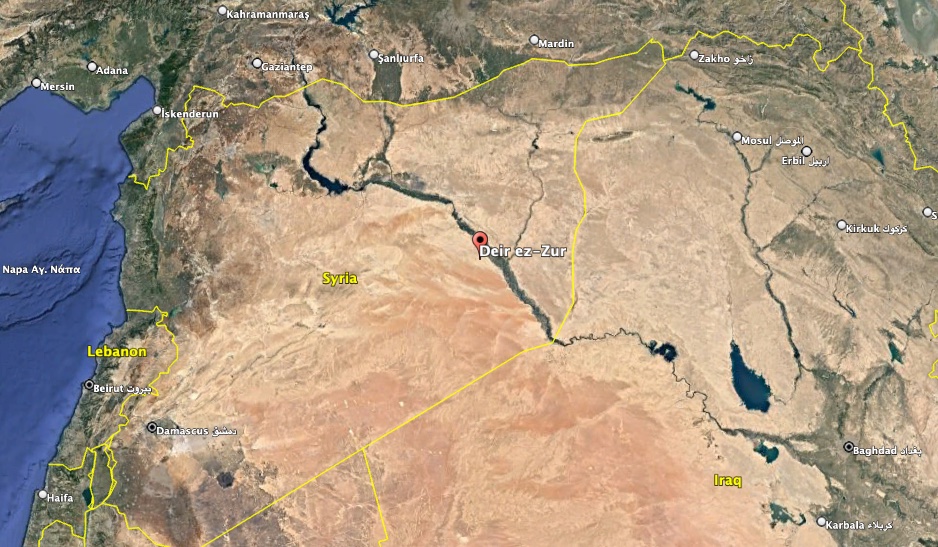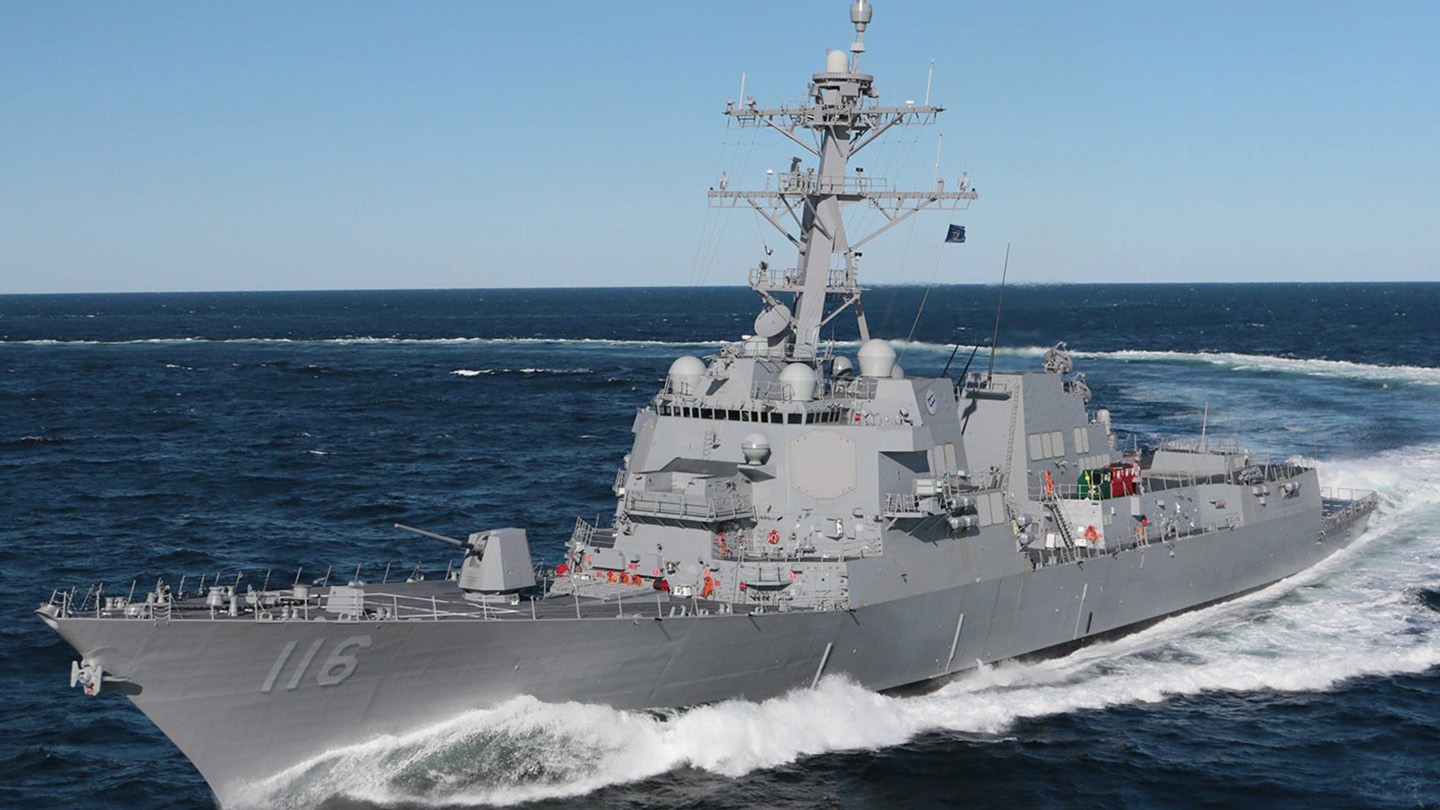The Arleigh Burke-class guided missile destroyer USS Thomas Hudner downed a drone launched from Yemen while in the Red Sea. However, its source and intended target remains unclear with U.S. officials speaking on condition of anonymity providing The War Zone different assessments.
The incident was first reported by Reuters, but additional details have emerged since.
One U.S. official told The War Zone that the drone was launched by Iranian-backed Houthi rebels from Yemen and that it was attacking the vessel.
“The track was definitely attacking the Hudner,” said that official, speaking on condition of anonymity to address operational details.
A U.S. military official offered a different take.
“We do not currently assess that the Hudner was the intended target of today’s drone shoot down,” said that official, speaking on conditions of anonymity for the same reason.
“On November 15th and while transiting the international waters of the Red Sea, the crew of the USS Thomas Hudner (DDG-116) engaged a drone that originated from Yemen and was heading in the direction of the ship,” the official Defense Department (DoD) statement released to reporters earlier in the day stated. “The Hudner‘s crew engaged and shot down the drone to ensure the safety of U.S. personnel. There were no U.S. casualties or any damage to the ship.”

Regardless of the specific details, this was the second known time since the Israel-Hamas war broke out that a U.S. warship engaged Houthi weapons. As we reported last month, the Arleigh-Burke class destroyer USS Carney destroyed four Houthi land attack cruise missiles and nearly 20 drones. After that Oct. 19 attack, Air Force. Brig Gen. Pat Ryder, the Pentagon’s top spokesman, said it appeared the missiles and drones engaged by the Carney could have been heading to Israel.
The U.S. official who spoke to The War Zone could not say if the U.S. considers this incident an escalation from the Carney incident. The U.S. military official would not “engage in hypotheticals” but said separately that “U.S. forces always have the inherent right to self-defense.”
The attack on the Hudner also came after the Nov. 8 shoot down over the Red Sea of a U.S. MQ-9 Reaper drone by the Houthis. The rebel group has also been firing cruise and ballistic missiles and launching drones at targets in Israel in response to that country’s ongoing operations in the Gaza Strip.
In addition to the attack on the Hudner, there were also more attacks on U.S. forces in Iraq and Syria.
“In the last one to two hours, there were three rockets [fired] near Green Village” in northeast Syria, a U.S. official told The War Zone Wednesday afternoon at about 4 p.m. Eastern Daylight Time. “None were effective [or hit] the base. There were no injuries or any damage.”
Earlier in the day, a loose-knit organization of Iranian-backed militias claimed another attack on U.S. forces in Iraq Wednesday.
“In response to the crimes committed by the enemy against our people in Gaza, the Mujahideen of the Islamic Resistance in Iraq targeted the American occupation base, Ain al-Assad, in western Iraq, with a missile salvo, directly hitting its targets,” the Islamic Resistance in Iraq claimed on Telegram.
The War Zone could not independently confirm that claim and reached out to the Defense Department. We will update this story with any information provided.
If the Islamic Resistance in Iraq statement is accurate, it would mark the 57th such attack on U.S. forces in Iraq and Syria since Oct. 17.
On Tuesday, the Pentagon confirmed to The War Zone that on the morning of Nov. 14, a multi-rocket attack was launched against U.S. and Coalition forces at Mission Support Site Euphrates, Syria. There were casualties or damage to infrastructure in the 56th such attack.
On Tuesday, Deputy Pentagon Press Secretary Sabrina Singh said of 55 attacks on U.S. forces in the region that had happened at the time, 27 took place in Iraq and 28 in Syria.
Singh added that 59 US personnel have received injuries in the traumatic brain injury (TBI) or non-serious categories.” About 27 troops were evaluated for TBI and 32 for non-serious injuries and all have returned to duty, she said.
The Syrian Observatory for Human Rights (SOHR) on Wednesday said that Iranian-backed militia groups are beginning to move south, to areas they control in central Syria following a series of U.S. airstrikes.
“During the past hours, SOHR sources reported that the Iranian-backed militias intended to carry out new repositioning operations in areas they control in Deir Ezzor province on the western bank of the Euphrates, where they changed locations and headquarters in the vicinity of Al-Mayadeen and the outskirts of Al-Bokamal, in addition to Deir Ezzor city. They also transferred weapons and ammunition for more fortified places according to orders of the militias leadership in anticipation of new strikes by Israel or the United States of America, particularly after the recent strikes targeted them a few days ago.”

In addition, SOHR said that at least eight members of the Iranian-backed militias, including Syrians and Iraqis, were killed during the Nov. 12 U.S. airstrikes that targeted weapons and ammunition warehouses and a missile launcher in Hasrat in Al-Bokamal countryside, and Al-Haidariyah farms near Al-Mayadeen city.
SOHR had previously said there were nine deaths caused by the Nov. 9 U.S. airstrike on Iranian-backed militia targets in Syria.
We could not independently verify the SOHR claims and have reached out to the Pentagon for more details. We will update this story with any information provided.
Given stated intention of the Iranian-backed groups like the Houthis and Islamic Resistance in Iraq to continue attacks on U.S. forces in the region, we will almost assuredly see more such incidents.
To date, the airstrikes in Syria have failed to deter attacks on U.S. forces in the region. Asked Tuesday why the U.S. hasn’t yet responded to the downing of the MQ-9, Singh said nothing is off the table.
“I’m not saying that we’re not going to respond,” she said. “We always reserve the right to respond at a time and place of our choosing. But I just don’t have anything to forecast for you right now. Our main goal is to contain and to make sure this conflict is contained within Gaza. Right now, that’s where we see it. We see the conflict remaining within Israel and Gaza and between Israel and Hamas.”
Contact the author: howard@thewarzone.com
